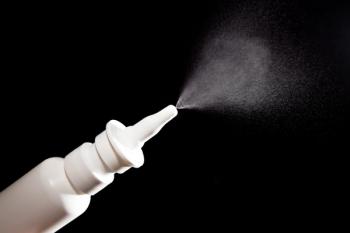
- Vol 37, Issue 10
- Volume 37
- Issue 10
Managing Distress in Health Care Workers During COVID-19: Lessons From a Disaster Trauma Lens
We have learned that in order to provide much-needed social support during difficult times, organizations should prepare to take certain steps.
Coronavirus disease 2019 (COVID-19) blindsided the world. It exposed gaps in public health emergency planning at every level, including in the strategic planning to support mental health and wellness. Studies of the SARS and
Disaster literature
The literature on disasters and public health emergencies describes pervasive emotional distress, feelings of extreme vulnerability, uncertainty, and threats to life, particularly during the rapid spread of an outbreak.2 A recent COVID-19 web-based survey supports this finding. More than 40% of respondents reported symptoms of depression, anxiety, traumatic stress, substance use, and suicidal ideation. Symptoms were notably elevated in black and Hispanic individuals, essential workers, unpaid adult caregivers, and those with psychiatric conditions.3 Fortunately, evidence from disaster
After the acute phase of the disaster, long-term stress responses can emerge. Lancee et al.7
Disaster trauma is characterized by exposure to personal loss and community disruption. Cultural, political, and socioeconomic factors all influence the shared
New York successfully flattened the curve by the summer. The number of daily deaths fell dramatically, from a high of nearly 800 per day across the state down to none in New York City by June. Now the focus is shifting to economic recovery, while keeping community viral transmission low and bracing for a potential second wave. This could be the beginning of the reconstruction phase: figuring out a new normal and how to live with a persisting virus. Disillusionment is certainly felt when other states are unable to control the virus, in spite of the availability of immense resources and clear and concrete directions from world-class health experts to wear
Supporting staff
Studies
LEADERSHIP. Strong leadership and supportive teams influenced the resilience of health care workers during the SARS and Ebola outbreaks.12 Capable and effective leadership over the course of a major disaster makes staff feel safe and supported by the organization. Best practices include:
• Visible and prepared leaders at organizational, departmental, and team levels.
• Setting the tone for a positive and supportive organizational culture.
• Skilled assessment of team strengths and weaknesses.
• Proactive outreach and crisis support from all levels of leadership.
• Creativity and innovation in increasing staff resilience and reducing stress.
• Role modeling infection control and safety practices—wear masks, practice physical distancing, and wash your hands.
COMMUNICATION. The cornerstone of
• Communicate timely and trustworthy COVID-19-specific guidance.
• Acknowledge and normalize feelings of anxiety related to the pandemic.
• Communicate efforts to address the negative impacts of the pandemic, including financial concerns.
• Communicate supportive organizational practices (eg, working from home, flexible work schedule, reduced hours, job rotation, location rotation, availability of PPE, testing).
• Widely disseminate available self-care and wellness information and resources.
EDUCATION. Training and education on the issues of infection control, disaster mental health, and the disaster response system increases confidence and moderates the risk of stress. Just as Federal Emergency Management Agency (FEMA) provides appropriate resources and training for disaster responders before deployment, organizations have a responsibility to provide education and training to better prepare for and respond to a pandemic. Organizations should be prepared to offer staff:
• General information on disasters and pandemics.
• Education on infection control and universal precautions.
• Overview of disaster mental health.
• Targeted education on key sources of distress from COVID-19 (eg, quarantine-related distress, fear of contagion, concern for family, job stress, financial concerns, interpersonal isolation, stigma).
SOCIAL SUPPORT. Studies indicate that social support, both personal and professional, is a consistent protective factor and a strong mitigator of emotional distress in the wake of a massive disaster.15,16 Unfortunately, the battle against COVID-19 calls for decreased interpersonal contact. Quarantine, physical distancing, and remote and virtual work have all increased social isolation. This unprecedented public health crisis requires creativity and innovation to restore a sense of community and connectedness. In order to provide much-needed social support during difficult times, organizations should prepare to:
• Hold virtual meetings and virtual lunch/coffee breaks/happy hours to improve team cohesion and morale.
• Build in formal time during work hours for peer consultation to reduce feelings of isolation and increase feelings of efficacy.
• Use in-person or virtual service meetings and huddles to build relationships and improve responsiveness.
• Establish buddy system to check and balance each other’s stress level.
The scarcity of existing research on staff support and mitigation strategies during pandemics presents an opportunity to develop new programs that can be tailored to specific organizational contexts and cultures. Evaluation of best practices and robust analysis of the impact and sustainability of staff support plans during COVID-19 can inform future strategic planning and policy recommendations for staff wellness and resilience.
Dr Quitangon is clinical assistant professor of psychiatry, New York University School of Medicine and psychiatrist at the Department of Veterans Affairs New York Harbor. Dr Quitangon discloses that she receives royalties from Routledge for her book Vicarious Trauma and Disaster Mental Health: Understanding Risks and Promoting Resilience.
Acknowledgement — The author wishes to acknowledge Mary Docherty, MA, MBBS (Hons), MRCP, MRCPsych, for her work in planning and development of the COVID-19 staff support response at St Thomas’ Hospital and King’s College Hospital in London, England.
References
1. World Health Organization. WHO checklist for influenza pandemic preparedness planning. 2005. Accessed September 8, 2020.
2. Chong MY, Wang WC, Hsieh WC, et al. Psychological impact of severe acute respiratory syndrome on health workers in a tertiary hospital. Br J Psychiatry. 2004; 185:127-133.
3. Czeisler ME, Lane RI, Petrosky E, et al. Mental health, substance use, and suicidal ideation during the COVID-19 pandemic. MMWR Morb Mortal Wkly Rep. 2020; 69(32):1049-1057.
4. North CS, Pfefferbaum B, Hong B. Historical perspective and future directions in research on psychiatric consequences of terrorism and other disasters. In: Neria Y, Gross R, Marshall R, Suzzer E, eds. 9/11: Mental Health in the Wake of Terrorist Attacks. Cambridge University Press; 2006:95-113.
5. Norris, F. Community and ecological approaches to understanding and alleviating postdisaster distress. In: Neria Y, Gross R, Marshall R, Suzzer E, eds. 9/11: Mental Health in the Wake of Terrorist Attacks. Cambridge University Press; 2006:141-156.
6. North CS, Pfefferbaum B. Mental health response to community disasters: A systematic review. JAMA. 2013;310(5):507-518.
7. Lancee WJ, Maunder RG, Goldbloom DS.
8. Norris F, Friedman M, Watson P. 60,000 disaster victims speak. Part 1: An empirical review of the empirical literature, 1981-2011. Psychiatry. 2002;65(3):207-239.
9. Zinner ES, Williams, MB.
10. Zunin, LM, Myers, D. Training manual for human service workers in major disasters (2nd ed.). DHHS Publication No. ADM 90-538. Department of Health and Human Services; 2000.
11. Quitangon, G. What do we need to know about disasters? In: Quitangon G, Evces MR, eds. Vicarious Trauma and Disaster Mental Health: Understanding Risks and Promoting Resilience. Routledge; 2015:156-172.
12. Grace SL, Hershenfield K, Robertson E, Stewart DE.
13. Quitangon G, Evces, MR. What can organizations do to address vicarious trauma in disasters? In: Quitangon G,Evces, MR (eds.). Vicarious Trauma and Disaster Mental Health: Understanding Risks and Promoting Resilience. Routledge; 156-172.
14. Perrett K, Al-Wali W, Read C, et al.
15. Norris, F, Kaniasty K. Perceived and received social support in times of stress: A test of the social support deterioration deterrence model. Journal of Personality and Social Psychology. 1996; 71(3):499-511.
16. Brewin CR, Andrews B, Valentine, JD. Meta-analysis of risk factors for posttraumatic stress disorder in trauma-exposed adults. Journal of Consulting and Clinical Psychology. 2000; 68(5):748-766. ❒
Articles in this issue
about 5 years ago
Psychopathy: Insights for General Practiceabout 5 years ago
Assessing Competency To Stand Trialabout 5 years ago
Behind Closed Doorsabout 5 years ago
The Case for Medication-Assisted Treatment: An Ethical Priorityabout 5 years ago
Oxcarbazepine: Does It Have a Role in Bipolar Disorder?about 5 years ago
What to Do When Being There Means Being Vulnerableabout 5 years ago
I Don’t Want to Die Here in Timbuktuabout 5 years ago
Easy To Miss, Hard to Treat: Notes on Frontotemporal Dementiaabout 5 years ago
Documenting Recovery in Delusional Disorder With the MMPI-2Newsletter
Receive trusted psychiatric news, expert analysis, and clinical insights — subscribe today to support your practice and your patients.














